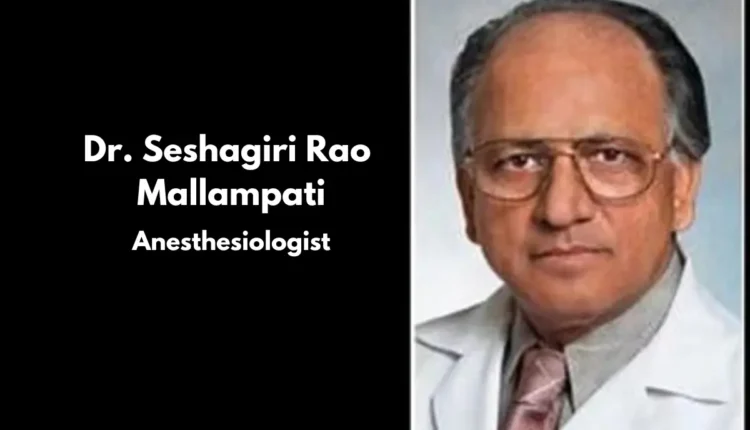Dr. Seshagiri Rao Mallampati, an illustrious figure in the field of anesthesiology, has left an indelible mark on medical practice with his pioneering work.
Best known for developing the Mallampati score in 1985, Dr. Mallampati’s contributions have profoundly impacted the ease and safety of endotracheal intubation, a critical procedure in anesthesia and emergency medicine. This article delves into his inspiring life journey, his groundbreaking work, and the enduring legacy of his contributions to medicine.
Early Life and Education of Seshagiri Rao Mallampati
Born in the serene village of Patchalatadi Parru in Andhra Pradesh, India, in 1941, Dr. Seshagiri Rao Mallampati’s early years were marked by an intrinsic curiosity and a passion for learning.
His academic journey began at Guntur Medical College in 1963, and he later transferred to Andhra Medical College, where he graduated with an MBBS in 1968. His medical training continued with an internship at King George Hospital in Visakhapatnam, where he honed his clinical skills.
Emigration and Advanced Training in the United States
In 1971, driven by a desire to expand his horizons and gain advanced medical training, Dr. Seshagiri Rao Mallampati emigrated to the United States. He embarked on a rigorous residency in anesthesiology at the prestigious Lahey Clinic Foundation and Boston Hospital for Women. This was followed by a clinical fellowship at Harvard Medical School, where he further specialized in the field of anesthesiology.
By 1976, Dr. Mallampati had achieved the status of a Diplomate of the American Board of Anesthesiology, and a year later, he became a Fellow of the same board. His expertise and dedication quickly earned him a position as an attending anesthesiologist at Boston Hospital for Women, and later at the Brigham and Women’s Hospital, both esteemed institutions in the medical community.
The Genesis of the Mallampati Score
Dr. Seshagiri Rao Mallampati’s most significant contribution to medicine came in 1983, when he observed a challenging case of endotracheal intubation.
Despite the patient’s ability to open her mouth widely, her large tongue obstructed the view of critical anatomical landmarks, making intubation difficult. This observation led Dr. Mallampati to hypothesize that the size and position of the tongue were crucial predictors of intubation difficulty.
In 1985, Seshagiri Rao Mallampati published a seminal paper in the Journal of the Canadian Anesthesia Society, detailing a study involving 210 patients. The study established an inverse correlation between the visibility of the soft palate, faucial pillars, and uvula, and the ease of intubation.
From this research, Dr. Mallampati proposed the eponymous Mallampati classification, which categorized patients into three classes based on the visibility of these structures. This classification system provided anesthesiologists with a simple, non-invasive method to predict intubation difficulty and plan accordingly.
The Evolution and Impact of the Mallampati Score
The Mallampati score revolutionized the field of anesthesiology by offering a reliable predictor of intubation challenges. In 1987, Dr. Samsoon and Dr. Young expanded on Dr. Mallampati’s work, introducing a fourth class to the Mallampati score, further refining its predictive accuracy. This four-class system is now widely used in medical practice around the world.
Dr. Seshagiri Rao Mallampati’s innovation has saved countless lives by allowing for better preparation and management of difficult airways. The Mallampati score has become a cornerstone of pre-anesthetic evaluation, helping to prevent complications and ensure patient safety.
A Legacy of Excellence
Dr. Mallampati’s career was marked by a relentless pursuit of excellence and a commitment to advancing medical knowledge. He served as an Assistant Professor of Anesthesiology at Harvard Medical School, where he mentored the next generation of anesthesiologists and continued to contribute to the field through research and clinical practice.
In 2017, after a distinguished career spanning over four decades, Dr. Mallampati retired from medical practice. His contributions, however, continue to resonate within the medical community. The Mallampati score remains a vital tool in anesthesiology, a testament to his enduring legacy.
Also Read:Rao Remala: An Inspirational Journey in Tech and Philanthropy

